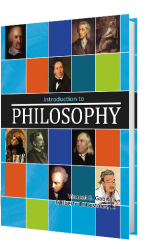National Service Training Program (A Modular Worktext for NSTP 1)
Authors: Florida C. Labuguen, Jennifer L. Amaranto
The need for preparing the youth for their duties as citizens via the National Service Training Program (NSTP) cannot be overemphasized.
As embodied in RepublicAct No. 9163, the NSTP Law of 2011 has ushered a new direction in training the Filipino youth for the duties and responsibilities of citizenship. This citizenship program purports to prepare the youth for their primordial tasks as nation-builders and citizen-soldiers in response to the clarion call of the times.
As an educational program and a curricular requirement, it is aimed at transforming the youth into productive assets for local and national development. Based on the findings from history that there are much to be expected from the intrinsic and potential value of the young Filipino, the Program is designed to develop knowledge, skills and values in order for them to become good citizens.
To attain the objectives of NSTP, this modular work-text attempts to present a comprehensive overview of the Program.
The whole gamut of insights and activities relative to NSTP contained in this work-text satisfies the need for instructional material that meets the prescribed guidelines for the implementation of RA 9163.
The student-trainees will find this modular work-text useful, relevant and responsive to the contemporary situation. The zealous and vibrant response of our youth to the realization of the ends of this Program will constitute a covenant in building sustainable communities in the country for national development.
It is with fervent hopes that the school officials and authorities mandated by law to operationalize this vital aspect of youth empowerment through citizenship education will optimally use this resource material in the delivery of subjects covered
on the first leg of part of NSTP, especially along the subjects of the 25-hour common module phase in pursuit of that ultimate end of moulding the young people into civic and defense-prepared individuals for nation building.
For comments and suggestions, please contact the Philippine Society of NSTP Educators and Implementers, Incorporated, through e-mail address: PSNEI_INC@ yahoo.com.ph.
An endeavor of this magnitude entails an enormous debt of gratitude.




